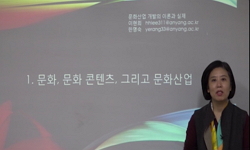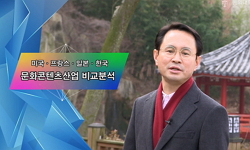이 글은 디즈니로 대표되는 초기 만화영화(cartoon film)에 대한 테오도어 아 도르노(Theodor Adorno)의 매체론적 평가를 규명하는 것을 목표로 한다. 아도르 노에게 있어 문화산업과 이로써 생산된 ...
http://chineseinput.net/에서 pinyin(병음)방식으로 중국어를 변환할 수 있습니다.
변환된 중국어를 복사하여 사용하시면 됩니다.
- 中文 을 입력하시려면 zhongwen을 입력하시고 space를누르시면됩니다.
- 北京 을 입력하시려면 beijing을 입력하시고 space를 누르시면 됩니다.
https://www.riss.kr/link?id=A109272699
-
저자
이아름 (서울대학교 미학과)
- 발행기관
- 학술지명
- 권호사항
-
발행연도
2024
-
작성언어
Korean
-
주제어
테오도어 아도르노 ; 디즈니 ; 문화산업 ; 초기 만화영화 ; Theodor Adorno ; Disney ; culture industry ; early cartoon films
-
등재정보
KCI등재
-
자료형태
학술저널
- 발행기관 URL
-
수록면
253-277(25쪽)
- 제공처
-
0
상세조회 -
0
다운로드
부가정보
국문 초록 (Abstract)
아도르노의 수많은 저작 중 직접적으로 디즈니나 만화영화를 다루는 글은 찾아보기 어려우나, 대중문화를 논하는 저작 곳곳에서 이에 대한 비판적 서술 을 확인할 수 있다. 그는 디즈니를 비롯하여 당시 부상하던 만화 영화의 가학 성이 대중을 폭력에 노출시키고 무감하게 만드는 효과를 갖는다고 비판한다. 이것은 내재적 연관을 잃고 오직 속도만을 강조하는 플롯에 의해 배가된다. 또한 당시 디즈니가 자랑하던 ‘미키마우징’의 기술, 즉 화면과 음향을 일치시 키는 고도의 테크닉이 개별적인 매체의 독립성을 약화시키고 전체주의에 기 여한다고 보았다.
이러한 주장은 자칫 그가 만화영화라는 대중문화의 매체 일반을 부정하는 것으로 읽힐 수 있다. 그러나 그는 한스 아이슬러와의 공저에서 디즈니 만화 영화의 기술이 필연적으로 여러 감각을 사용하는 영화의 매체적 가능성을 드 러내는 작법의 모델로서 활용가능하다고 보았다. 또한 거대 자본이나 문화산 업에 의해 발전되는 기술일지라도 사용에 따라 예술적 일신으로 이어질 수 있 다고 서술하며, <환타지아>를 상연하기 위한 진취적인 기술적 혁신을 고평가 하기도 한다. 만화 영화에 대한 아도르노의 서술은 다소 파편적으로 분포되어 있는데다 함축적이기 때문에 일반론으로 종합하여 이해하기 어렵다. 그러나 그의 시선은 만화 영화의 기술이 구현하는 매체성과 감각적 경험의 효과에 대 한 경각심을 갖도록 한다. 이 글은 다소 일면적으로 이해되어 온 아도르노의 대중문화 이론에 대한 새로운 시각을 제시함과 동시에 그의 논의를 통해 만화 영화의 근본적인 매체적 힘을 돌아보고 성찰하기 위한 하나의 지침을 제시하 고자 한다.
이 글은 디즈니로 대표되는 초기 만화영화(cartoon film)에 대한 테오도어 아 도르노(Theodor Adorno)의 매체론적 평가를 규명하는 것을 목표로 한다. 아도르 노에게 있어 문화산업과 이로써 생산된 대중문화는 ‘대중 기만으로서의 계몽’ 을 실현하는 이데올로기의 수단으로 이해된다. 문화산업은 복제 기술을 통한 규격화와 대량생산을 통해 문화를 몰개성한 것으로 전락시키며, 나아가 표준 화와 우민화에 복무하는 지배의 도구로 만든다. 특히 영화는 기계적 복제 기 술을 토대로 하는 예술로서 문화산업의 대표적 매체로써 비판되어 왔다. 하지 만 동시에 그는 문화산업의 기술일지라도 예술의 내재적인 요건에 따라 사용 된다면 예술의 잠재성을 끌어낼 가능성을 갖는다는 낙관적인 전망을 내비치 기도 한다.
아도르노의 수많은 저작 중 직접적으로 디즈니나 만화영화를 다루는 글은 찾아보기 어려우나, 대중문화를 논하는 저작 곳곳에서 이에 대한 비판적 서술 을 확인할 수 있다. 그는 디즈니를 비롯하여 당시 부상하던 만화 영화의 가학 성이 대중을 폭력에 노출시키고 무감하게 만드는 효과를 갖는다고 비판한다. 이것은 내재적 연관을 잃고 오직 속도만을 강조하는 플롯에 의해 배가된다. 또한 당시 디즈니가 자랑하던 ‘미키마우징’의 기술, 즉 화면과 음향을 일치시 키는 고도의 테크닉이 개별적인 매체의 독립성을 약화시키고 전체주의에 기 여한다고 보았다.
이러한 주장은 자칫 그가 만화영화라는 대중문화의 매체 일반을 부정하는 것으로 읽힐 수 있다. 그러나 그는 한스 아이슬러와의 공저에서 디즈니 만화 영화의 기술이 필연적으로 여러 감각을 사용하는 영화의 매체적 가능성을 드 러내는 작법의 모델로서 활용가능하다고 보았다. 또한 거대 자본이나 문화산 업에 의해 발전되는 기술일지라도 사용에 따라 예술적 일신으로 이어질 수 있 다고 서술하며, <환타지아>를 상연하기 위한 진취적인 기술적 혁신을 고평가 하기도 한다. 만화 영화에 대한 아도르노의 서술은 다소 파편적으로 분포되어 있는데다 함축적이기 때문에 일반론으로 종합하여 이해하기 어렵다. 그러나 그의 시선은 만화 영화의 기술이 구현하는 매체성과 감각적 경험의 효과에 대 한 경각심을 갖도록 한다. 이 글은 다소 일면적으로 이해되어 온 아도르노의 대중문화 이론에 대한 새로운 시각을 제시함과 동시에 그의 논의를 통해 만화 영화의 근본적인 매체적 힘을 돌아보고 성찰하기 위한 하나의 지침을 제시하 고자 한다.
다국어 초록 (Multilingual Abstract)
Although Adorno did not specifically focus on Disney or cartoon films in his extensive body of work, his critical perspective is evident in his writings on the culture industry. He condemned the sadism prevalent in Disney and cartoon films, arguing that they desensitized the public to violence. This desensitization is exacerbated by disjointed plots that prioritize speed over narrative coherence. Adorno further criticized Disney’s celebrated “Mickey Mousing” technique — a sophisticated method of synchronizing sound with visuals — as undermining the independence of individual media and contributing to totalitarian tendencies.
This critique could be interpreted as a broader rejection of cartoon films as a medium of culture industry. However, in his collaboration with Hanns Eisler, Adorno recognized the technology in Disney’s cartoon films as exemplifying the potential for a multisensory cinematic experience. He also argued that technologies developed by large capital or the culture industry could lead to artistic development, depending on their application, and he praised the innovative technical approaches used in the production of Fantasia. Adorno’s account of cartoon films is somewhat fragmented and implicit, making it difficult to synthesize into a generalization. However, his focus remains on the effects of the medium and the sensory experiences that the technology of cartoon films enables. This article aims to shed new light on Adorno’s theory of mass culture, which has often been understood in a one-dimensional manner, and to use his discussion as a guide for reflecting on the fundamental mediumistic power of cartoon films.
This study aims to analyze Theodor Adorno’s critique of Disney’s cartoon films. Adorno perceived the culture industry and the mass culture it engenders as ideological tools that realize “enlightenment as mass deception.” Through standardizatio...
This study aims to analyze Theodor Adorno’s critique of Disney’s cartoon films. Adorno perceived the culture industry and the mass culture it engenders as ideological tools that realize “enlightenment as mass deception.” Through standardization and mass production facilitated by reproductive technologies, the culture industry deindividualizes culture, transforming it into an instrument of domination that serves standardization. Film, in particular, is critiqued as a representative medium of the culture industry, grounded in mechanical reproduction technology. Nonetheless, Adorno also believed that the technologies of the culture industry possess the potential to unleash the artistic possibilities inherent in art when utilized according to art’s intrinsic requirements.
Although Adorno did not specifically focus on Disney or cartoon films in his extensive body of work, his critical perspective is evident in his writings on the culture industry. He condemned the sadism prevalent in Disney and cartoon films, arguing that they desensitized the public to violence. This desensitization is exacerbated by disjointed plots that prioritize speed over narrative coherence. Adorno further criticized Disney’s celebrated “Mickey Mousing” technique — a sophisticated method of synchronizing sound with visuals — as undermining the independence of individual media and contributing to totalitarian tendencies.
This critique could be interpreted as a broader rejection of cartoon films as a medium of culture industry. However, in his collaboration with Hanns Eisler, Adorno recognized the technology in Disney’s cartoon films as exemplifying the potential for a multisensory cinematic experience. He also argued that technologies developed by large capital or the culture industry could lead to artistic development, depending on their application, and he praised the innovative technical approaches used in the production of Fantasia. Adorno’s account of cartoon films is somewhat fragmented and implicit, making it difficult to synthesize into a generalization. However, his focus remains on the effects of the medium and the sensory experiences that the technology of cartoon films enables. This article aims to shed new light on Adorno’s theory of mass culture, which has often been understood in a one-dimensional manner, and to use his discussion as a guide for reflecting on the fundamental mediumistic power of cartoon films.
동일학술지(권/호) 다른 논문
-
애니메이션 <심해>에 나타나는 서사적 은유에 관한 연구
- 한국만화애니메이션학회
- 소몽하
- 2024
- KCI등재
-
3D 캐릭터를 활용한 효율적인 이모티콘 제작 방식에 관한 연구 -이모티콘 캐릭터를 중심으로-
- 한국만화애니메이션학회
- 김경문
- 2024
- KCI등재
-
‘낯설게 하기’ 이론을 바탕으로 VR 애니메이션의 상호작용 서사 연구-애니메이션
을 중심으로- - 한국만화애니메이션학회
- 길천웅
- 2024
- KCI등재
-
- 한국만화애니메이션학회
- 팽지립
- 2024
- KCI등재





 DBpia
DBpia






